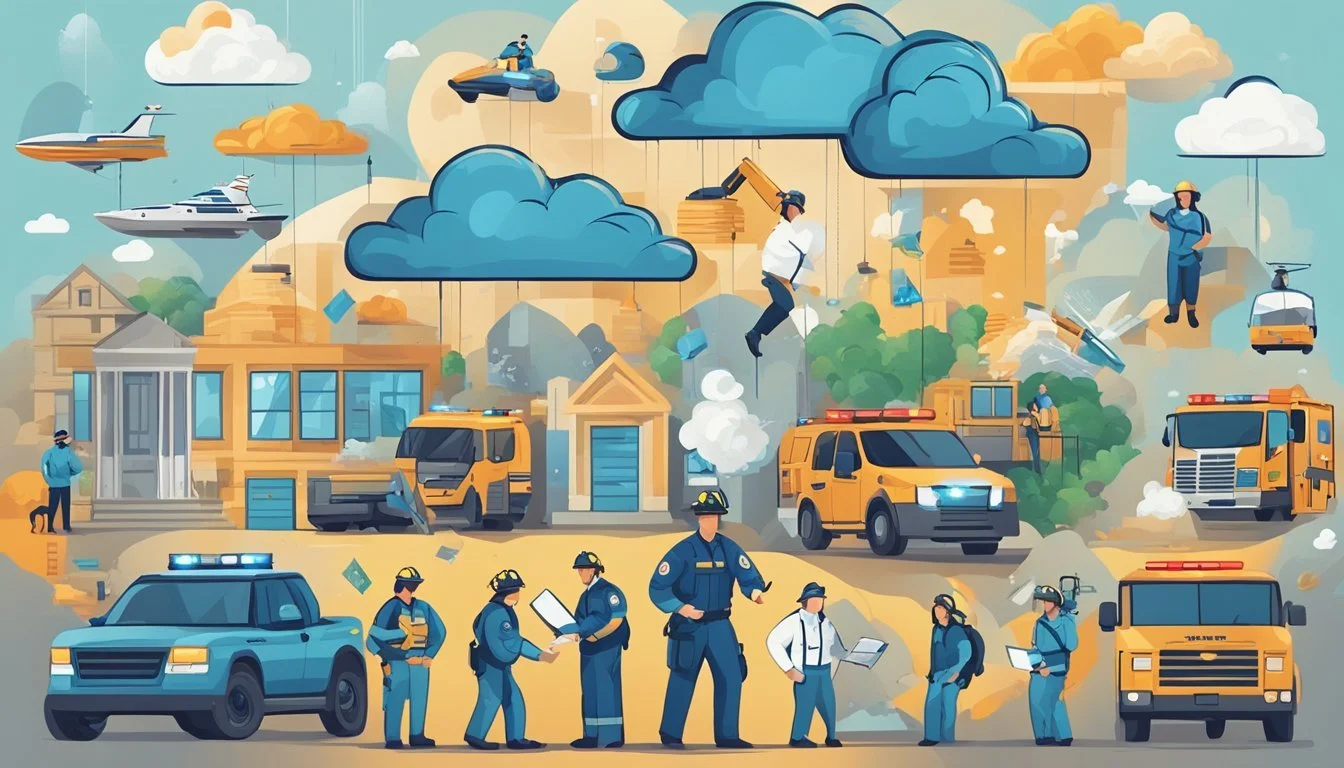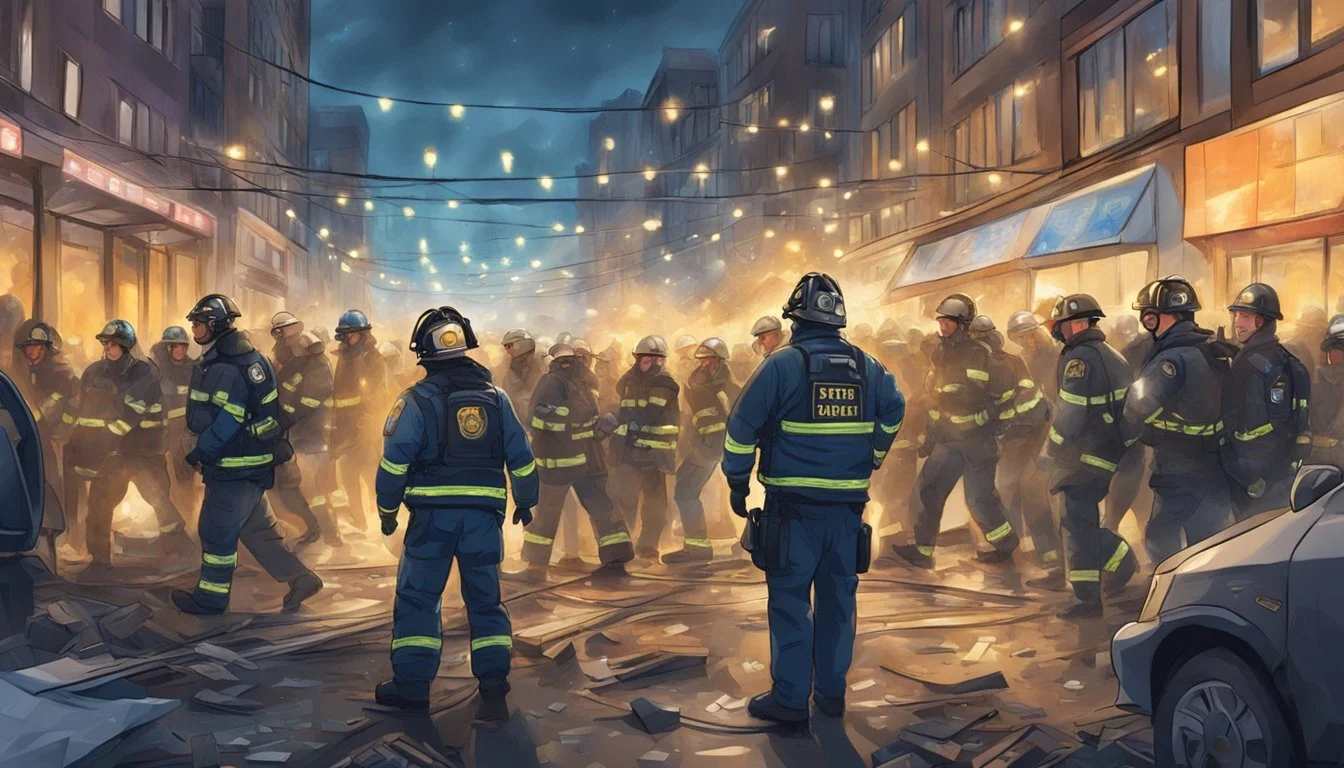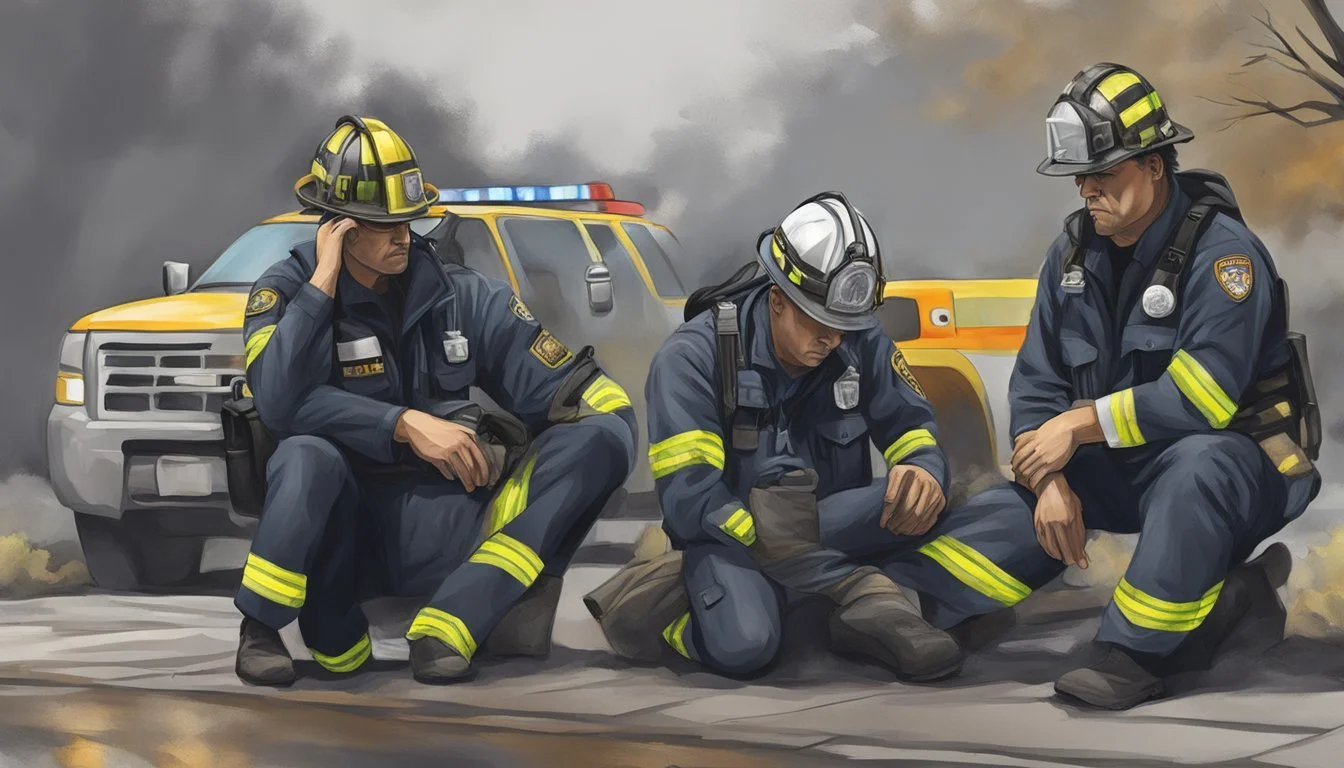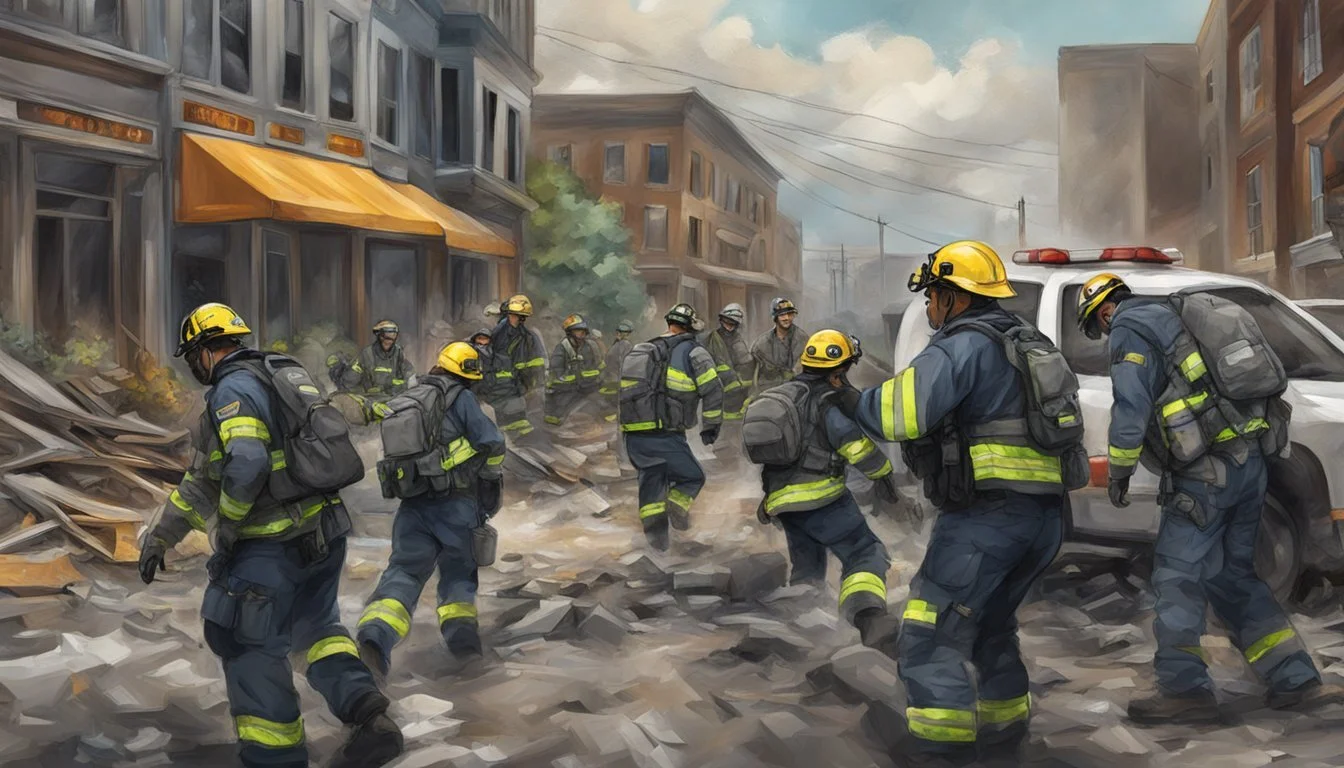9 Common Myths About PTSD in First Responders
Separating Fact from Fiction
Post-Traumatic Stress Disorder (PTSD) is a significant concern for first responders who regularly face traumatic events. These brave individuals—firefighters, police officers, paramedics, and others—are often at a higher risk of developing PTSD because of the nature of their work.
Understanding the misconceptions surrounding PTSD in first responders is crucial for their mental health and well-being. This article will explore and clarify some of the most common myths about PTSD in this vital workforce, aiming to promote awareness and support for those affected.
1) PTSD is a Sign of Weakness
A common myth is that PTSD is a sign of weakness. This is not true. PTSD is a diagnosable mental health condition that results from experiencing trauma. It has nothing to do with a person's strength or character.
PTSD involves changes in how the brain processes fear and stress. These alterations can affect memory, attention, and problem-solving abilities. The changes in brain function are significant and require understanding and treatment.
First responders face intense, traumatic events regularly. It is not surprising that they might develop PTSD. Experiencing trauma impacts everyone differently, and the response to trauma is unique to each individual.
Believing that PTSD signifies weakness can prevent first responders from seeking help. Acknowledging PTSD as a legitimate medical condition encourages appropriate support and treatment. Misconceptions about PTSD might contribute to the stigma of mental health issues.
For accurate information, one can visit sources such as The Recovery Village or the Gateway Foundation. These resources help clarify these myths and offer support for those affected. It's essential to view PTSD with the same seriousness as any other medical condition.
2) Only military personnel get PTSD
A common myth is that only military personnel develop PTSD. While PTSD is frequently associated with combat, it is not confined to military experiences.
Anyone exposed to traumatic events can develop PTSD. First responders, such as police officers, firefighters, and paramedics, frequently encounter traumatic incidents. These experiences can trigger PTSD symptoms just as they do in military personnel.
PTSD can result from various non-combat-related events. For example, traumatic events such as car accidents, natural disasters, or violent assaults can lead to PTSD.
First responders often face multiple traumas throughout their careers. A firefighter might witness severe injuries or fatalities, while a police officer may respond to violent crimes or accidents. These repeated exposures increase the risk of developing PTSD.
The misconception that PTSD is exclusive to military personnel can prevent affected first responders from seeking help. It is important to recognize that PTSD does not discriminate based on occupation. Combat veterans, civilians, and first responders are all vulnerable to this condition.
Awareness and understanding are crucial in supporting those dealing with PTSD, regardless of their professional background. Effective treatment options and support systems can significantly improve outcomes for anyone struggling with PTSD.
Acknowledging that PTSD affects a wide range of individuals encourages a more inclusive approach to mental health care, benefiting those who need it most regardless of their occupational role.
3) First responders can't have PTSD because they're trained for it
Training and mental preparation are critical in helping first responders handle stressful situations. But training alone does not make them immune to the psychological impacts of trauma.
First responders often face life-threatening events, repeated exposure to accidents, natural disasters, and violent incidents. Even with extensive training, these experiences can still lead to post-traumatic stress disorder (PTSD).
Research has shown that about 10% of first responders report symptoms of PTSD. This demonstrates that despite their preparation, they are still highly susceptible to this condition.
Moreover, the unique nature of their job exposes them to constant high-stress environments. Such prolonged exposure can exacerbate the risk of developing PTSD, regardless of their training.
Families of first responders also experience secondary trauma from the changes in their loved ones. This further highlights that the impact of trauma can extend beyond the professional life into personal realms.
For those seeking treatment, the clinical profiles of first responders with PTSD may differ from others. Therapeutic approaches such as Cognitive Behavioral Therapy (CBT) and Eye Movement Desensitization and Reprocessing (EMDR) have proven effective in treating PTSD symptoms.
In conclusion, it is a misconception to believe that training fully shields first responders from PTSD. Their experiences on the job frequently challenge this notion.
4) PTSD happens immediately after a traumatic event
A common myth is that PTSD symptoms appear immediately following a traumatic event. This is not accurate. PTSD can develop at any time after the trauma. Symptoms may start shortly after the event or surface months or even years later.
It is crucial to understand that untreated PTSD can persist and fluctuate over time. Symptoms can appear continuously for some individuals, while for others, they may come and go.
Many first responders might not experience symptoms right away. Instead, these may develop much later, triggered by a particular event or cumulative stress over time. Recognizing this delay is vital for providing timely support and intervention.
PTSD in first responders can be particularly complex due to the nature of their work. Events from earlier in their careers could trigger symptoms much later, making it appear disconnected from any single incident. This understanding helps in offering appropriate care and support when required. For more information, consider checking out these insights on PTSD symptoms.
Recognizing that PTSD does not always manifest immediately ensures that first responders receive the ongoing mental health support they need throughout their careers.
5) First responders with PTSD can't continue working
Many assume that having PTSD automatically disqualifies first responders from continuing their careers. This isn’t necessarily true. Many first responders with PTSD can still perform their duties effectively with the right treatment and support.
Occupational health programs often provide resources to help first responders manage their symptoms. These resources can include counseling, peer support, and trauma-informed care.
Some first responders might require adjustments to their work environment or duties. These accommodations can enable them to continue working while managing their condition.
Treatment options such as therapy and medication can significantly improve symptoms, allowing first responders to function effectively in their roles. Access to mental health support can reduce the impact of PTSD on their professional abilities.
A culture that reduces stigma around mental health allows first responders to seek help without fear of judgment. This promotes a healthier work environment where they can thrive despite having PTSD.
Programs that emphasize mental wellness and provide ongoing support help first responders maintain their careers. Encouraging open discussions about mental health can further aid in their continued professional participation.
Understanding and addressing PTSD in first responders ensures that they receive the support needed to continue their vital work.
6) Medication is the only treatment for PTSD
Medication is not the sole treatment for PTSD. While certain medications, such as Sertraline (Zoloft) and Paroxetine (Paxil), are recommended for PTSD management, other options exist.
Therapies like Cognitive Behavioral Therapy (CBT) are highly effective in treating PTSD. CBT helps individuals understand and change their thought patterns related to their trauma.
Eye Movement Desensitization and Reprocessing (EMDR) is another effective therapy. EMDR uses guided eye movements to help individuals process and integrate traumatic memories.
Additionally, support groups and peer support can provide a sense of community and understanding. They offer a platform for sharing experiences and coping strategies.
Holistic approaches, such as yoga and mindfulness meditation, can also benefit PTSD sufferers. These methods focus on reducing stress and improving emotional regulation.
First responders with PTSD often benefit from a combination of treatments rather than relying solely on medication. A comprehensive approach addresses various facets of the disorder.
For further details, visit the National Center for PTSD.
7) PTSD is Just an Overreaction to Stress
One common myth is that PTSD is merely an overreaction to stress. This misconception undermines the severity of the disorder.
PTSD is a serious mental health condition triggered by experiencing or witnessing a traumatic event. It often involves intense symptoms like anxiety, depression, flashbacks, and intrusive thoughts.
Scientific research confirms that PTSD affects brain function and structure. The amygdala, prefrontal cortex, and hippocampus show abnormalities in individuals with PTSD.
The condition is not limited to veterans or those in combat. First responders, such as police officers, firefighters, and paramedics, also frequently experience PTSD due to the nature of their work and repeated exposure to traumatic incidents.
Dismissing PTSD as an overreaction can prevent individuals from seeking the necessary treatment. Effective treatments like cognitive behavioral therapy exist and can significantly improve the quality of life for those affected.
Acknowledging PTSD as a legitimate and severe disorder is crucial. This helps reduce stigma and promotes a better understanding of what those suffering from it endure.
More information about PTSD myths can be found here.
8) All first responders with PTSD are violent
This belief is a misconception. While PTSD can involve symptoms like irritability and anger, it does not automatically lead to violent behavior.
First responders with PTSD often experience symptoms such as flashbacks, nightmares, and physical issues like chronic pain and headaches. These symptoms do not inherently make someone violent.
Studies, such as those noted by the JAMA Network, show that only a small percentage of people with PTSD exhibit violent behavior.
Many first responders actively seek treatment and support, which helps manage their symptoms effectively. They utilize various therapies to lead productive lives, mitigating the impacts of PTSD.
Stigmatizing first responders with PTSD as inherently violent can discourage them from seeking needed help. It is crucial to understand that PTSD is a complex condition with individualized manifestations, not a predictor of violence.
9) You can't get PTSD if you don't see a psychiatrist
It is a common misconception that PTSD can only be diagnosed or experienced by those who have seen a psychiatrist.
PTSD is a mental health condition that can develop in anyone who has witnessed or experienced a traumatic event. First responders are particularly vulnerable due to the nature of their work. Symptoms can manifest long before a formal diagnosis is made.
People may experience symptoms such as flashbacks, anxiety, and irritability without ever visiting a mental health professional. The lack of formal diagnosis does not negate the presence of the disorder.
Untreated PTSD can lead to severe consequences, affecting daily functioning and relationships. Even without seeing a psychiatrist, first responders can experience the full range of PTSD symptoms.
It’s important to understand that PTSD is a medical condition, not just a situational reaction. For more details, you can read how the Mayo Clinic describes PTSD symptoms and treatments.
While seeing a psychiatrist can provide a pathway to effective treatment through therapy and medication, it is by no means the sole avenue for recognizing and understanding PTSD. Many first responders suffer silently, emphasizing the need for awareness and broader mental health support systems.
The Impact of PTSD on First Responders
PTSD significantly affects first responders in various aspects of their lives, including mental health, physical well-being, and job performance. Understanding these effects is crucial for recognizing the full scope of the disorder.
Mental Health Effects
First responders frequently endure traumatic events, leading to elevated rates of PTSD. Some display symptoms such as intrusive thoughts, flashbacks, or severe anxiety. These symptoms can interfere with daily life and contribute to other mental health issues like depression or substance abuse.
Studies have shown that approximately 10% of first responders report symptoms of PTSD. This disorder often leads to feelings of isolation, anger, or emotional numbing. Ensuring access to mental health resources is essential for mitigating these impacts.
Physical Health Consequences
PTSD can manifest in physical ailments. Chronic stress associated with PTSD might result in cardiovascular issues, headaches, or gastrointestinal problems. Additionally, the intense stress response can weaken the immune system, making first responders more susceptible to illnesses.
Many first responders experience sleep disturbances, a key indicator of PTSD. They might suffer from insomnia or frequent nightmares, which can lead to long-term health problems like hypertension or diabetes. Addressing these physical symptoms is as important as treating the psychological effects.
Effects on Job Performance
PTSD can substantially impair a first responder's job performance. Symptoms such as hypervigilance or avoidance behavior can reduce their ability to perform under stress. This can create safety risks not only for the first responder but also for their colleagues and the public.
Performance issues are further compounded by absenteeism. Due to various PTSD symptoms, first responders might take more sick days, leading to staffing shortages and increased workplace stress. This cycle highlights the need for comprehensive support systems within first responder organizations.
Addressing PTSD's impact on job performance through proper treatment and workplace accommodations can help maintain a more effective and safe work environment for these crucial personnel.
Common Misconceptions About PTSD in First Responders
Misperceptions about PTSD can hinder first responders from seeking the help they need. Addressing these misconceptions helps break the stigma and emphasize effective support.
Myth: PTSD Only Affects Combat Veterans
A widespread belief is that PTSD primarily affects military personnel. This is inaccurate. PTSD can impact anyone who experiences traumatic events. First responders, including firefighters, police officers, and paramedics, frequently encounter traumatic situations such as accidents, violence, and natural disasters.
Key Points:
PTSD is a psychological response to extreme stress or trauma.
First responders often witness distressing scenes that can trigger PTSD.
The prevalence of PTSD among first responders can be significant due to the nature of their work.
Myth: First Responders Are Immune to PTSD
Another common misconception is that first responders, due to their training and experience, are immune to PTSD. This belief overlooks the psychological impact of repeated exposure to traumatic events. Although first responders receive extensive training, this does not shield them from the mental health consequences of their experiences.
Key Points:
Training reduces the risk but does not eliminate PTSD.
The constant exposure to trauma can take a cumulative toll on mental health.
Recognizing this can promote a culture of mental health awareness within first responder communities.
Myth: Symptoms Appear Immediately After Trauma
It is often assumed that PTSD symptoms manifest immediately following a traumatic event. In reality, PTSD can develop weeks, months, or even years after the initial trauma. The delayed onset of symptoms can make it challenging to connect the dots between an event and emerging psychological issues.
Key Points:
PTSD symptoms can be delayed, complicating diagnosis and treatment.
Delayed symptoms include flashbacks, severe anxiety, and uncontrollable thoughts about the event.
Understanding this delayed onset is crucial for early intervention and support.
By recognizing these myths and addressing them with factual information, it becomes easier for first responders and their communities to identify symptoms and seek the necessary help.








